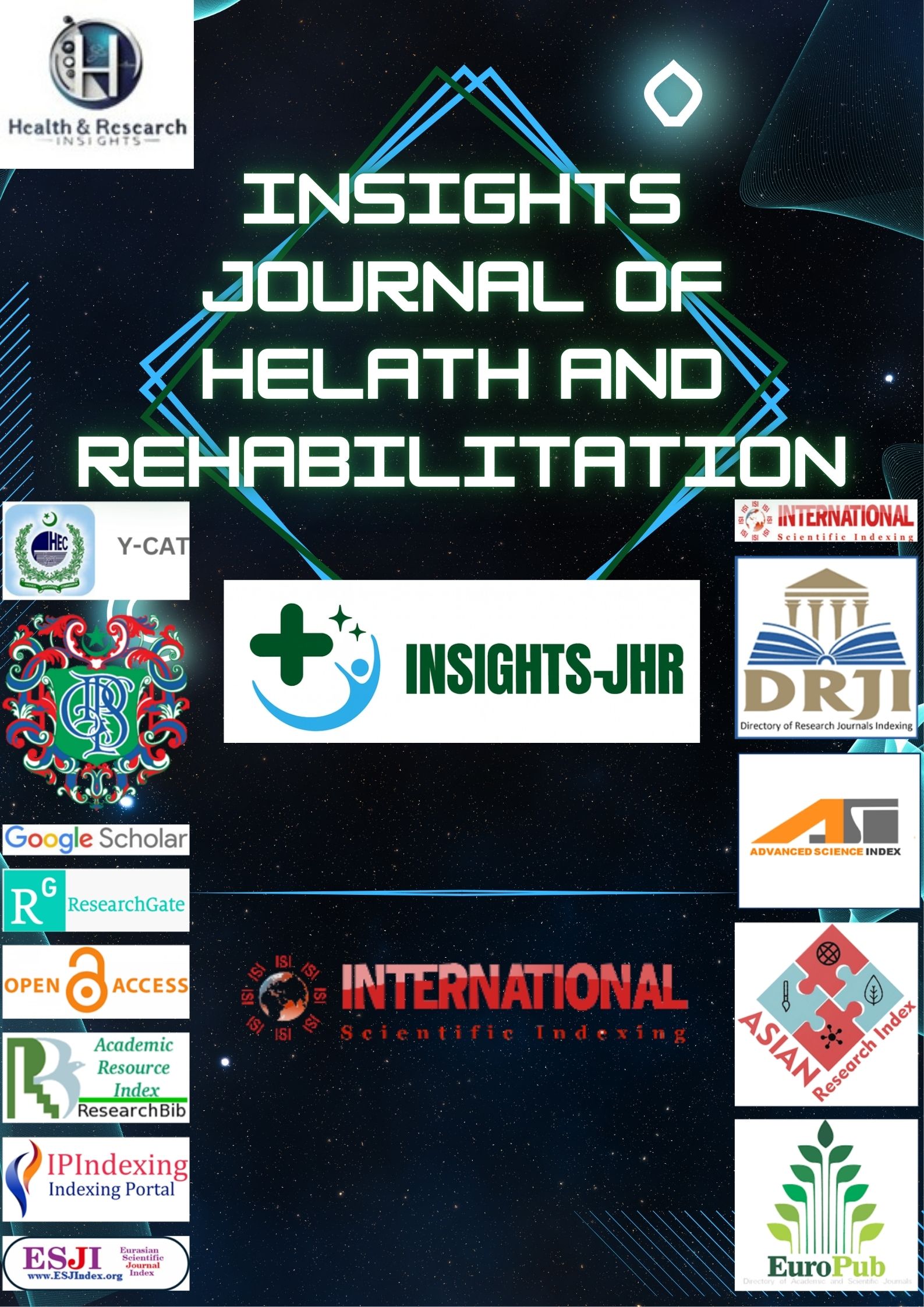CROSS-SECTIONAL ANALYSIS OF MICRORNA EXPRESSION PATTERNS AND THEIR ASSOCIATION WITH EARLY DIAGNOSIS OF HUMAN DISEASES IN PAKISTAN
DOI:
https://doi.org/10.71000/zrs10p04Keywords:
Biomarkers, Circulating microRNAs, Early diagnosis, Gene expression, qRT-PCR, ROC curve, Sensitivity and specificityAbstract
Background: Circulating microRNAs (miRNAs) have emerged as potential non-invasive biomarkers for early disease detection due to their stability in plasma and regulatory roles in gene expression. In Pakistan, early diagnosis of chronic and malignant diseases remains challenging, necessitating the exploration of novel molecular markers to enhance timely clinical interventions.
Objective: This study aimed to evaluate the expression profiles of selected circulating microRNAs—miR-21, miR-155, miR-34a, miR-126, and miR-122—and assess their diagnostic potential as early biomarkers among patients with diverse early-stage diseases compared to healthy controls.
Methods: A cross-sectional study was conducted on 180 participants, including 120 patients with early-stage pathological conditions and 60 age- and sex-matched healthy controls. Plasma samples were analyzed using quantitative real-time polymerase chain reaction (qRT-PCR) for miRNA quantification. Statistical analyses included independent t-tests, Pearson’s correlation, and receiver operating characteristic (ROC) curve evaluation to determine diagnostic accuracy.
Results: Significant upregulation of miR-21 (3.8-fold), miR-155 (2.9-fold), and miR-34a (2.4-fold) was observed among patients (p < 0.001), while miR-126 and miR-122 were downregulated (2.6- and 2.1-fold reductions, respectively; p < 0.01). ROC analysis revealed the highest diagnostic accuracy for miR-21 (AUC = 0.92), followed by miR-155 (AUC = 0.88). Combined miRNA panels improved sensitivity (93.1%) and specificity (89.4%). Negative correlations were noted between miR-126 and serum cholesterol (r = −0.45, p < 0.05) and between miR-122 and fasting glucose (r = −0.52, p < 0.01).
Conclusion: The study demonstrated that specific circulating miRNAs, particularly miR-21 and miR-155, possess strong diagnostic potential for early disease detection. Their expression signatures could be integrated into population-based screening protocols, enhancing early diagnosis and management in resource-limited healthcare settings.
References
Saleem A, Javed M, Furqan Akhtar M, Sharif A, Akhtar B, Naveed M, et al. Current updates on the role of MicroRNA in the diagnosis and treatment of neurodegenerative diseases. 2024;24(2):122-34.
Abubakar M, Hajjaj M, Naqvi ZeZ, Shanawaz H, Naeem A, Padakanti SSN, et al. Non-coding RNA-mediated gene regulation in cardiovascular disorders: current insights and future directions. 2024;17(4):739-67.
Nisar MF, Javed A, Ali A, Shaheen S, Rafiq M, Waqas MY, et al. Non-coding RNAs: recent advancements in the development and biochemistry as novel anti-tumor drug molecules. 2023;239.
Ameer MK, Ikram M, Khan MI, Wahab F, Naseer MI, Ullah NJIT, et al. Emerging biomarkers in major depressive disorder: Diagnostic, prognostic, and therapeutic implications. 2025;8(2):31-45.
Salar MZ, Mustafa G, Hassan T, Rafiq I, Tariq MNJKJoS. Emerging biomarkers for cancer diagnosis: Paving the way for precision oncology. 2025;4(2).
Abdelmonem BH, Kamal LT, Wardy LW, Ragheb M, Hanna MM, Elsharkawy M, et al. Non-coding RNAs: emerging biomarkers and therapeutic targets in cancer and inflammatory diseases. 2025;15:1534862.
Nandwaa JO, Mehmood A, Mahjabeen I, Raheem KY, Hamadou M, Raimi MZ, et al. Non-coding RNA Research.
Ullah A, Rehman IU, ODENTHAL M, Nadeem T, Ali Q, Amir M, et al. MiRNAs: EMERGING DIAGNOSTIC AND THERAPEUTIC TARGETS FOR HEPATITIS C VIRUS-ASSOCIATED DISEASES. 2025;73(4).
Ali R, Laskar SA, Khan NJ, Wahab S, Khalid MJF, Genomics I. Non-coding RNA’s prevalence as biomarkers for prognostic, diagnostic, and clinical utility in breast cancer. 2023;23(2):195.
Maqsood Q, Khan MU, Fatima T, Khalid S, Malik ZIJBCB, Research C. Recent insights into breast cancer: molecular Pathways, epigenetic Regulation, and emerging targeted therapies. 2025;19:11782234251355663.
Rehman SU, Ullah N, Zhang Z, Zhen Y, Din A-U, Cui H, et al. Recent insights into the functions and mechanisms of antisense RNA: emerging applications in cancer therapy and precision medicine. 2024;11:1335330.
Fatima M, Shahid M, Amin I, Javed HJMBR. Circular RNAs MTO1 and ZNF292 as potential diagnostic biomarkers in HIV patients treated with antiretroviral therapy. 2025;52(1):1-12.
Qian H, Maghsoudloo M, Kaboli PJ, Babaeizad A, Cui Y, Fu J, et al. Decoding the promise and challenges of miRNA-based cancer therapies: An essential update on miR-21, miR-34, and miR-155. 2024;21(14):2781.
Qamar T, Ansari MS, Masihuddin, Mukherjee SJJoCB. MicroRNAs as Biomarker in Rheumatoid Arthritis: Pathogenesis to Clinical Relevance. 2025;126(2):e30690.
Azam HMH, Rößling RI, Geithe C, Khan MM, Dinter F, Hanack K, et al. MicroRNA biomarkers as next-generation diagnostic tools for neurodegenerative diseases: a comprehensive review. 2024;17:1386735.
Hussain S, Bokhari H, Fan X, Malik S, Ijaz S, Shereen M, et al. MicroRNAs modulation in lung cancer: exploring dual mechanisms and clinical prospects. 2024;48(3):403.
Lal PM, Siddiqui MH, Soulat A, Mohan A, Tanush D, Tirath K, et al. MicroRNAs as promising biomarkers and potential therapeutic agents in breast cancer management: a comprehensive review. 2024;86(6):3543-50.
Muthu R, Manickam R, Thamarai R, Sivasamy S, Mahendran K, Prabhakaran RJFiG. NanoMarine therapeutics: a new wave in drug delivery from oceanic bioresources targeting colon cancer via miRNA modulation. 2025;16:1668618.
Downloads
Published
Issue
Section
License
Copyright (c) 2025 Murtaza Khodadadi, Tanzeela Iram, Mariam Kamran, Humera Usman, Sadaf Moeez, Iram Saddiqa Aamir (Author)

This work is licensed under a Creative Commons Attribution-NonCommercial-NoDerivatives 4.0 International License.







